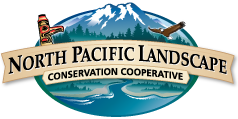Meeting Date: 2/17/2016
- 2/17/2016
Location: Anchorage, AK
Website: Website
Wednesday 17 February, Noon (AK)
Hatch timing and embryo survival in a changing climate: thermal adaptation and adaptive plasticity in sockeye salmon
Morgan Sparks, University of Alaska, Fairbanks, Institute of Arctic Biology
Abstract: A powerful example of local adaptation in salmonid fishes results from the relationship between spawn timing and the temperature regime experienced by incubating embryos, wherein populations generally spawn earlier in colder systems in part because duration of development is largely driven by temperature. As incubation temperature regimes are expected to change in the future, the ability to predict changes in early life history development will be an important tool for understanding the potential for adaptation under a warming climate. Temperature is the primary factor driving development in juvenile salmonids, and experienced temperature has been incorporated into statistical models to predict hatch and emergence timing with a high degree of certainty. However, existing models have traditionally been based on constant (i.e., average) temperatures in the laboratory and thus may not be representative of the variable temperature regimes actually experienced by incubating embryos under natural conditions. Because temperature regimes are relatively easy to measure in the field and hatch timing is an important life history component often unknown for wild populations, there is a need for precise predictions of hatch timing under observed temperature regimes and altered regimes owing to climate effects. Here we present work that extends an existing model to incorporate more realistic daily average temperature in place of average temperature over the course of incubation. We apply the extended model to 18 Bristol Bay sockeye salmon populations spawning in different habitat types (e.g. beaches, lake outlets, ponds, streams) to estimate hatch timing for early, peak, and late spawning portions of the populations. Additionally, we investigated hatch timing as it relates to changing climate conditions for a beach spawning population in Iliamna Lake based on predicted and observed past and future lake temperatures. Furthermore, we are conducting an experiment in which embryos from two Iliamna Lake sockeye salmon populations are reared in a suite of variable and constant temperature scenarios (representing experienced and predicted thermal regimes) in order to measure local adaptation and potential adaptive capacity to temperature changes. The populations spawn at the same time (mid-August) but in habitats that are representative of ends of the thermal continuum of Iliamna Lake, one being the warm and variable shores of an island and the other, cool and non-variable spring-fed ponds. Early results from this experiment suggest that population-level responses in hatch timing may be similar, but family-level differences in timing are likely sources for selection and therefore adaptive capacity. The culmination of this research will provide a multi-scale look into the adaptive capacity and potential resilience of Bristol Bay sockeye salmon to the changing environment.
Join in Anchorage:
Office of Subsistence Management Conference Room (2nd floor)
USFWS Regional Office
1011 E. Tudor Rd.
Connect to the Webinar:
1. Go HERE
2. If requested, enter your name and email address.
3. If a password is required, enter the meeting password: WALcc!2016
4. Click "Join".
5. Call-in: 1-866-730-5871; access code: 111 111
